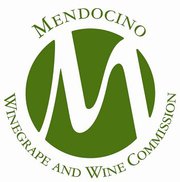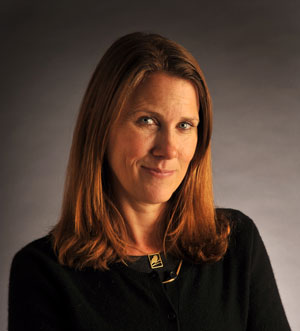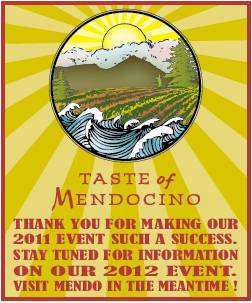John On Wine – State of the Disunion
This piece was originally published in the Ukiah Daily Journal newspaper on Thursday, September 3, 2015
With roughly three quarters of all the grapes grown in Mendocino County bought and used to make wine by Napa and Sonoma County wineries, why is it so hard to bring greater awareness of the quality of our wines to the greater wine drinking public?
The Anderson Valley Pinot Noir Festival is outstanding, and features what many consider to be the county’s most focused appellation and their best wines. In 2014, the dinner held the night before the event was well attended by wine media; this year, I found myself alone with the gathered winery owners and winemakers.
Taste of Mendocino, an event held in San Francisco to introduce restaurant and wine shop trade, distributors, and wine media to the bounty of the county, our wines and food, saw underwhelming attendance this year.
Hopland Passport attendance numbers have dipped in recent years, although the best wineries continue to increase their sales numbers from the event.
Too often, I see money wasted on marketers who promise the moon but can’t deliver the basics.
In Sonoma County, all of the wineries and vineyards belong to a single organization, are taxed and the resultant pool of money is used to increase the demand for Sonoma County wines and prices for their grapes. Two initiatives of note for the Sonoma County Vintners: conjunctive labelling and sustainable certification.
All wine produced in Sonoma County carries the name Sonoma County on the front label, with more precise geographic information allowed additionally, such as Dry Creek Valley or Murphy Ranch. County wide sustainable certification, even when it is a farcical sham, with (allegedly) cancer causing Monsanto Round Up, and even more egregiously toxic chlorpyrifos grown fruit receiving such certification, will allow greater market penetration for Sonoma County’s wines in health conscious outlets such as Whole Foods.
Lodi was once a name that winemakers would not put on a wine label, choosing California instead, as the general impression of Lodi grapes and the wines they produced was not favorable. Again, Lodi’s vineyards self-taxed and over the last twenty four years, the Lodi Winegrape Commission has done a great job, working with grape growers to improve viticulture, and wineries to make better wines. Lodi has a sustainability program that is not a sham, and worked with their growers to certify. Public relations and marketing efforts, constant and thoughtful, have led to increased grape prices and an acceptance of Lodi as a respected area for wine production.
Mendocino County once had a similar organization, the Mendocino Wine and Winegrape Commission (MWWC), but no longer. The group started poorly, with a scoundrel for a director embezzling funds from the group, and another directing business to their own company. It took a while, but eventually the group hired Megan Metz who did a good job promoting Mendocino County’s wines, but it was too little too late for the county’s vineyard owners and they voted MWWC out of existence after only five total years, and just two functional years, in operation, in a fit of myopic selfishness, over unrealized unrealistic expectations.
Megan Metz now heads up the Santa Cruz Mountains Winegrowers Association and is bringing a ton of the bay area’s consumers and trade to taste wines at the area’s wineries and events.
Lodi didn’t turn around their wine reputation or increase wine grape prices in two, or even five, years, but closer to twenty.
Our county is incredibly shortsighted and, worse, it is fractured. The Mendocino County wine scene isn’t just Hwy 128 vs. Hwy 101, but in each area there is division, with Yorkville cut off from Anderson Valley and Ukiah cut off from Hopland. Within the Anderson Valley, there is the Philo clique, and for Hopland there is the downtown crew. Meetings of each area’s local tourism group are often contentious.
Many wineries will not send wines for review or enter competitions, because of cheapness, and then complain that the county does not receive wine media coverage.
Out of the ashes of MWWC, the much smaller Mendocino Winegrowers, Inc. (MWI) was born, a voluntary dues paying collective of wineries and growers. Every winery and every vineyard should be paying members. If you own a winery or vineyard, and want to join and help increase the profile of our wines and prices for our grapes, visit MendoWine.com and then give Aubrey Rawlins a call at (707) 901-7629.
Here are some more recommendations to improve the county’s reputation for wine and prices for grapes: Anderson Valley wines, along with all other wines made in county from our grapes, should have Mendocino County included on the label. Every winery should submit all of their wines to all major publications for review, and enter all of their wines in at least four major wine competitions each year. Every winery should be involved in public relations, marketing, and communications for each event they participate in. Best practice marketing should be introduced.
Bringing people to taste and buy our wines, wines labelled Mendocino County, and creating a genuine, not sham, county wide sustainability program, will increase demand, bring media attention, and yield higher prices for our grapes.
With a more robust MWI, events like Taste of Mendocino can be brought home and marketed to consumers, with invitations going out four months in advance, with follow ups three months, two months, one month, two weeks, one week, and two days out; and the marketing materials should be provided to each participating winery or food vendor, to send out the invitations to each of their email lists. Taste of Mendocino could be, should be, as successful as Winesong, but it would take increased participation from all of our wineries.
I would love to see wine writers asking us to come taste our wines, because of the disproportionate number of awards taken by Mendocino County wines in competition and staggering number of 90+ rated wines in review, because we created must-attend events through planning and cooperative marketing following best practices, because over and over wine labels carry Mendocino County’s name, because we defended and enhanced our claim of being “America’s greenest grape growers”, because we grew up and behaved like adults for the betterment of all instead of like petulant selfish children with no thought or plan for the future.
Until we start acting responsibly, in larger numbers, in a cooperative participatory manner, Napa and Sonoma County wineries will be happy to continue to buy our grapes on the cheap, and wine writers will continue to dismiss us as the county that couldn’t get along.
























